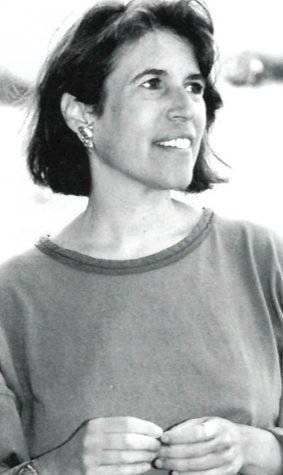Cracking Open the Writer’s Craft
By Natalie Goldberg
Bantam, 2000
384 pp.; $24.95 (cloth)
“This is a manifesto: Writing is a true spiritual path, an authentic Zen way,” Natalie Goldberg declares at the end of her new book, Thunder and Lightning: Cracking Open the Writer’s Craft. Years ago, her teacher, the late Katigiri Roshi, asked her, “Why do you come to sit meditation? Why don’t you make writing your practice? If you go deep enough in writing, it will take you everyplace.” Goldberg figured out a Zen-based way to write and began to teach it in workshops around the country and in her first book, Writing Down the Bones. The success of that book made her a writing roshi: she’s where Buddhism meets craft. She relieves you of the usual writer tribulations: writer’s block, writer’s envy, writer’s lust to triumph in the marketplace—to rack up reviews, cocktail parties, and sales. In their place she offers a whole other kind of suffering: the pain of opening yourself to the truth of your mind, of watching mind erupt in you, bomb you, raze you to groundlessness. Not pleasant.
Here’s a quick introduction to her method. Take paper, pen, a topic like: “I remember…” Or a line from a poem. Or a remark overheard. Time yourself: You’ll write for ten minutes, without stopping. Her first rule is, “Keep the hand moving.” Okay, go. Take another topic; another ten minutes. Go! Don’t think, don’t reread, don’t judge. In that rush, that outpouring, you’ll bum through the self-consciousness that pummels the life out of writing, the fear of exposing the self, the fear of producing junk. One of her principles: “You have permission to write the worst junk in America.”
The idea is to slice through ordinary, discursive mind to original mind. Thunder is dedicated to Allen Ginsberg, who taught Goldberg to go for “first thoughts.” Ginsberg, in turn, was inspired by Chogyam Trungpa Rinpoche’s “first thought, best thought..” First thoughts, Goldberg explains, “rise full-muscled from the bottom of your belly.” They are unfabricated, unexpected, fresh and true. Listening for first thoughts takes the “I” out of writing. “Suddenly your little will is not doing the writing, but instead writing does writing.”
Goldberg’s approach is inviting, playful. There’s a zest in her teaching and in the stories she tells about herself. M.F.K. Fisher invented the cookbook-as-memoir; Goldberg’s form is writing-manual-as-memoir. After Writing Down the Bones, she published Wild Minds and now Thunder and Lightning. Her life flashes through these three books in little slices, windows on a woman who is up for adventure, testing of various kinds: Now she’s taking up running, now she’s betting at the racetrack. She’s agonizing through a twenty-one-day writing self-retreat; she’s yanking off her clothes and diving naked into a lake. (This is exactly how she teaches, by the way. She’s the friend who urges everyone to strip and jump in.)

Wild mind but strong spine: She is a model of discipline, writing under all circumstances just as one is supposed to sit under all circumstances. (Is a key to her diligence the fact that she frequently writes in a cafe, with a hot chocolate at hand, or a croissant, or two chocolate chip cookies?) She finds all kinds of ways to structure time for practice, and bats away excuses for not writing. (You say you just can’t fit it into your schedule? Her friend Kate started her first novel writing for only thirty-five minutes a day on her lunch hour. “Time to write is simply that. An hour here, a half an hour there. Go. Move pen.”)
Thunder and Lightning takes writers beyond the hurdle of getting pen to move to the next step. How do those notebooks full of first thoughts become a book, an essay, a poem? How do you build structure?
It turns out that she really can’t tell us how to do it, only suggest that when we finally understand what our book—or essay or poem—is really about, the structure will emerge. We have to wait for form to appear. Goldberg asked a student of hers, Julie Landsman, how she constructs a book. Using writing practice based on topics she’s listed, Julie piles up material. She lets it sit for a while, then rereads, looking to see what themes run through the writing, what’s alive on the pages. Structure comes from following those themes. This process, of course, requires edging forward into uncertainty. “We don’t know where we’re going,” Goldberg writes. “There is a life force that will declare itself if you let it. Get out of the way.”
Following what is vibrant for her, she spends a good chunk of time urging writers to read widely in their form as a way to absorb structure. She also tackles two abilities usually crippled in writers: how to take in a compliment and how to bear editing. (“Let yourself bristle with pure fear!” she writes. Breathing through criticism is “another way to be done with yourself. Then you can listen like a rock or a mountain.”)
Three times in these pages she wonders whom we write for. At the end, she discovers that she writes for the Natalie she was before she silenced her in growing up. She writes to record how young Nat saw and felt. “Remember her,” Goldberg tells herself. “Stand with her and you’ll be steady on your own feet. You won’t wobble.”
Thank you for subscribing to Tricycle! As a nonprofit, we depend on readers like you to keep Buddhist teachings and practices widely available.